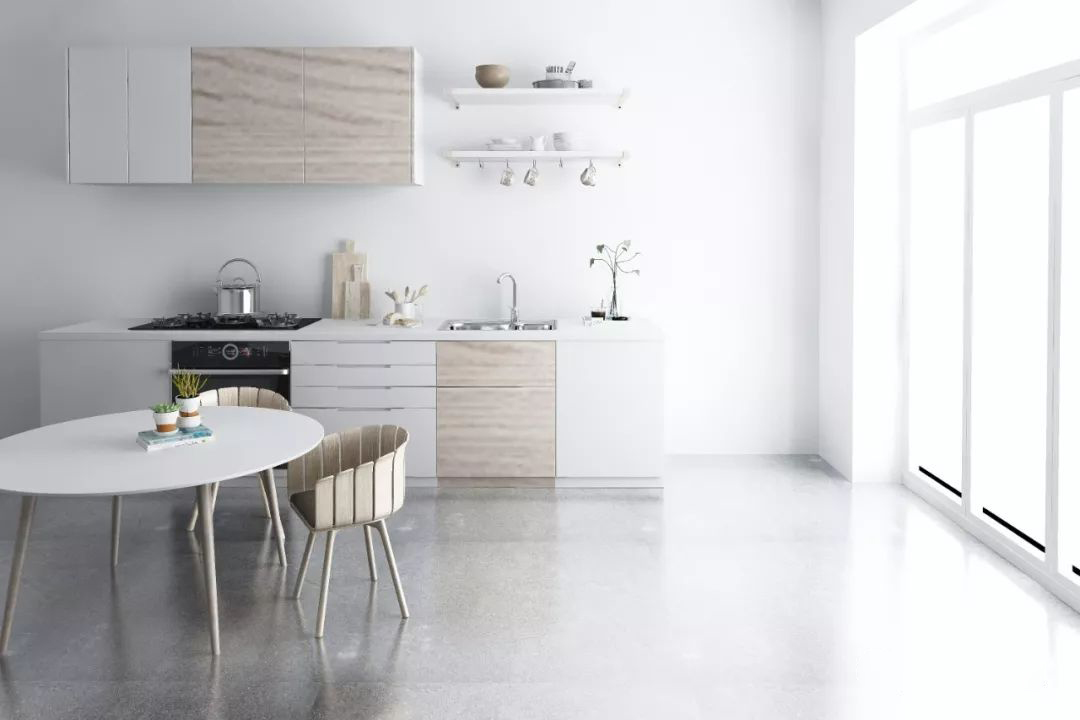More than a week after 2019, three voices were heard:
One voice is that the business is worse than last year. No one comes to the store every day, but there were deals last year.
Another sound is that there are deals in succession. This year, the owners began to prepare for decoration. Whether the business is good or not depends on their own ability and the appeal of the brand.
Another sound is that compared with last year, I feel that there is no change. I am going to do some promotions to catch the peak season in March.
Back in January, the situation was not good. The national building materials and home furnishing prosperity index (BHI) was 73.99, down 19.74 points month on month and 5.83 points year on year.
The sales volume of building materials and home furnishing stores above designated size nationwide in January was 61.7 billion yuan, down 32.88% month on month and 9.46% year on year.

The month on month decline is nothing. After all, the month before the Spring Festival and the month where the Spring Festival is located, business must be worse. The month on month decline is generally the case.
However, the year-on-year decline shows that the situation is really not good. A few drops in the national market is equivalent to billions of dollars lost. Distribution to stores means that some dealers' business has exploded in January.
It is estimated that the situation in February will not be significantly reversed. After all, during the Spring Festival, there was basically no deal in physical stores. Everyone starts work on February 10 or so.
However, please note that the online home furnishing business is not bad. JD has released a Spring Festival consumption data before, which is unexpected. Their conclusion is:
1. Top 5 categories of sales: mobile communication, computer office, home appliances, clothing, shoes and boots, and home furniture and home decoration.
2. Compared with the same period last year, the top 5 categories with the fastest year-on-year growth in sales are: kitchenware (399%), home furniture and home decoration (185%), gift boxes and bags (148%), local life/tourism travel (107%), and medicine and health care (83%).
The performance of home furniture and home decoration is very eye-catching, and a certain proportion of home consumption during the Spring Festival has been transferred to the Internet. Alibaba also has the 2019 Spring Festival economic report, but has not specifically disclosed the transactions of furniture, building materials and home decoration.
What does the above quoted information reflect? The beginning of 2019 is not very bad. The overall prosperity of the industry has decreased, which will affect the offline business of a small number of enterprises, mainly the offline business is more affected.
The good performance of e-commerce sales of home furniture and home decoration shows that customer flow and consumption habits are still shifting online. In fact, the situation of the industry is not bad, both online and offline. However, if we fail to grasp the trend of new passenger flow, things will not be so good.
Citing an analysis of Tianfeng Light Industry, there are several viewpoints as follows:
(1) Based on the completed area and the completion data of 300 cities tracked by Ovi Cloud, the number of houses completed and delivered in 2019 is expected to improve compared with that in 2018, and the demand for decoration will increase, which will drive the performance of household enterprises in 2019 to bottom out around the second quarter. At the same time, the sales area of first and second tier new houses is expected to improve in 2019.
(2) The second-hand housing transactions in the 10 major cities we tracked have recovered from the second half of 2018, and are expected to continue to improve in 2019 driven by rigid demand and real estate policies.
(3) Due to the change of urban policies, real estate may bring about relaxation of regulation in some cities.
(4) The logic of improving the concentration of household enterprises is still in place. After the brutal development period of channel dividends, empowering dealers will become a new growth engine.

The above judgment is relatively objective, which is consistent with the research and judgment of most institutions on the trend of the pan household industry.
It should be added that in January 2019, the sales of some leading real estate enterprises were declining, but some second tier real estate enterprises were growing magnificently. This change deserves our attention. For example, those who make engineering orders cannot only focus on leading real estate enterprises. They must focus on regional and second tier real estate enterprises. Of course, they must pay attention to the cash flow of developers, It should be healthy.
In addition, the concentration of the home furnishing market will continue to rise, and the dividends from traditional channels will be very little. Simply empowering dealers cannot be a new driving force for growth.
Dealers have their own limitations. Most of what they can do is to open a store, then find customers, talk about customers and provide services. As an enterprise, it has to grasp the growing potential channels of supply chain platform, fine decoration, apartment, rental housing, and full decoration in addition to dealers.
There are also several analyses on the industry situation, and the main points are as follows:
The first book: Under the tone of "one city, one policy" in the property market, local governments can formulate property market policies according to their own conditions, and it is not ruled out that there are local micro adjustment policies in succession.
At present, the two sessions of the provincial and municipal governments have been held one after another, in which the statements on real estate are almost the same. The main line is that houses are used for living, not for speculation. At the same time, it emphasizes stabilizing land prices, housing prices, and expectations. The goal is to maintain the stability of the real estate market.
What does stability mean? It means that house prices are unlikely to rise rapidly and the trading volume will not fluctuate greatly. Of course, house prices may decline a little, but there will not be a sharp drop. On the basis of 2018, there may be a small increase, and some cities will decline slightly.
The boom of real estate is no problem, and the newly started, completed and delivered projects are stable. Naturally, the market space of home building materials and decoration industry will not be compressed.

The second book: Does the industry prosperity level remain stable, which means that everyone will not suffer too much?
Not necessarily. Most people can still live, but a few cannot. The market concentration will further increase, and the enterprises accounting for 20% of the total will live very well. 80% of listed home furnishing companies are expected to maintain a growth rate of at least 20% in 2019.
Most of the unlisted leading enterprises, such as Hengjie, Jiumu, Zhanchen, Arrow Sanitary Ware, should also be able to maintain this growth rate. However, the 20% of small and medium-sized enterprises in the tail will have a hard time. The number of bankruptcy losses should not be less than that in 2018.
Even so, there will be a large number of emerging companies. It is expected that they may be concentrated in such areas. The market is not very mature and the opportunity space is relatively large, such as:
Home building materials supply chain, new home retail tools, smart lighting, smart locks, smart toilets, system bathroom, top wall integration, luxury furniture, prefabricated interior decoration, etc.
The third book: It is expected that the delivery proportion of finished houses will rise. In 2018, the national delivery rate will be about 25%, and that of first tier cities will be more than 70%. Some data show that it is about 90%, and that of second tier cities will be about 50%. This proportion will continue to rise.
There must continue to be decoration companies closed, but the increase in the proportion of hardbound houses does not mean that the decoration market is depressed.
Even in the first tier cities with a high rate of fine decoration and housing delivery, many companies still survive, some of which are still leading enterprises, opening chains nationwide, such as Beijing's Dongyi Risheng, Longfa Decoration, etc., but those who survive are those who bring diamond diamonds and can handle porcelain.
Either take the order from the developer, or do the old house and N times decoration business, or take the renovation of the finished house. A certain proportion of middle and high income owners will knock out the finished houses delivered by developers and redecorate them.
The fourth book: Diversified and decentralized channels, once again divided the attention of buyers, and further diversified order sources, including finished houses (hardbound houses), full decoration, large home furnishing stores, home furnishing stores, new retail stores, Tmall, JD, Pinduoduo, community group buying, etc.

It is always necessary to focus on two or three places outside the sales channels, so that the future will be secure.
Of course, national chain stores or local leading household stores such as Red Star Macalline, Fantasy Home, Fusen Beauty, Daming Palace are also core channels and traffic sources.
However, the stores in the store are polarized. Some stores don't have many customers. Every year, they are concerned with leaving the store to test two abilities: first, can you grab customers in the store? The second is whether you can go out of the store and grab customers in the vast world.
The fifth book: the impact of new categories and new models, such as whole house customization, smart home, full decoration, system bathroom, integrated wall, etc., are all in the market development stage and maturing. Do you follow? Do you have the strength to follow? How to cut in? If you are a dealer, how to cut in? Test our wisdom and action.
How about not doing it? Maybe not. You have to think ahead for the business in 5 or 10 years.
The suggestion is that, if conditions permit, we must follow new categories, new models and new technologies. It is unwise to reject or deny them. We should properly choose our own sure entry point, plunge into it, and do it. A more secure way might be to find the right allies and break the game together.




